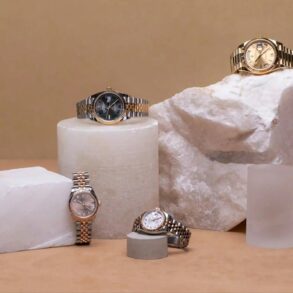
The Federal Trade Commission (FTC) prevailed in the first round of its much-criticized challenge to Tapestry Inc.’s acquisition of Capri Holdings Limited. Tapestry owns the Coach brand, and Capri owns the Michael Kors and Kate Spade brands. After a seven-day evidentiary hearing in which the court heard from over 30 witnesses – including 16 live fact witnesses and four experts – Judge Jennifer Rochon of the U.S. District Court for the Southern District of New York on Oct. 24, 2024, granted the FTC’s motion to preliminarily enjoin the transaction. The court’s ruling in favor of the FTC appears on its face to be a straightforward application of standard antitrust principles to each contested element of the case – but was also overwhelmingly favorable to the FTC, including on the important question of whether the FTC provided the existence of a market for “affordable luxury” handbags. Judge Rochon stressed that her finding of fact and conclusions or law were “merely preliminary” and subject to revisiting by the FTC in its in-house adjudicatory process, which is scheduled to begin on Dec. 9, 2024. What remains to be seen if the merging parties elect to continue the litigation is whether Judge Rochon’s adoption of all of the FTC’s arguments and rejection of all of the merging parties’ defenses reflect the strength of the FTC’s case or, instead, are just a decision by Judge Rochon to draw all inferences in favor of the FTC in reaching her “merely preliminary” rulings.
In a detailed 169-page opinion, Judge Rochon found that the FTC had shown a likelihood of ultimate success and that the equities supported issuance of the preliminary injunction to allow the FTC’s in-house administrative adjudication to proceed. Although the court noted that entry of the injunction might cause Tapestry and Capri to terminate the transaction, Judge Rochon found the injunction necessary because of potential complications to unwinding a consummated transaction if the FTC prevailed in its administrative proceeding. Under those circumstances, denying to enjoin the transaction and allowing it to proceed risked harming consumers in a market the court found “important to many women, not only to express themselves through fashion but to aid in their daily lives – from supporting their career aspirations by … inspiring confidence in professional settings, to holding important personal items, to carrying a young child’s snacks or toys.”
Turning Point
Although the FTC and the merging parties battled vigorously on all issues, the decision turned principally on the “fiercely dispute[d]” question of whether the FTC had successfully proved the existence of its Goldilocks-style “affordable luxury” handbag market that fell between the lower-priced “mass market” and the higher-priced “true luxury” handbag categories. Rejecting Tapestry’s and Capri’s arguments that the FTC’s market was “completely divorced from the marketplace realities,” the court found that “brand is a fundamental attribute of a handbag” and that the commercial realities of the handbag marketplace – including differences in materials and craftsmanship, unique production facilities, distinct pricing (with “massive price differences between accessible luxury and true luxury … well recognized”) and recognition by handbag-industry participants – supported the existence of a distinct “affordable luxury” handbag market. The judge based her findings on “reams of ordinary-course documents,” repeatedly rejecting the defendants’ interpretations of those documents as self-serving and lacking credibility. In particular, the court noted that the defendants repeatedly used the term “affordable luxury” in the months before and after the merger “only for the term to disappear from their lexicon once the FTC filed suit in April 2024.”
Judge Rochon also credited the testimony of the FTC’s economist, who opined that that the “accessible luxury” handbag market was supported by the “hypothetical monopolist test” because his data showed that too few consumers would switch to “mass market” or “true luxury” handbags when faced with a price increase for “affordable luxury” handbags.
Having established the existence of the “affordable luxury” market, Judge Rochon then determined whether the transaction would likely harm consumers and found that the “FTC presents powerful evidence that the merger … would result in the combined firm holding excessive market share and market concentration, thus establishing a presumption that the merger’s effects will be anticompetitive.” The judge adopted 30 percent as the threshold market share for a presumptively anti-competitive transaction, accepting as persuasive the stricter standards of the new Merger Guidelines, and found that the merging parties’ projected market share would be at least 59 percent – well above the threshold for presumed anti-competitiveness.
As further support for its presumptively anti-competitive finding, the court found that “numerous ordinary-course documents … indicate[d] that” the merging parties competed closely on prices and marketing and that such competition would be lost if the merger were to proceed.
Finally, the court rejected the defendants’ arguments that either new entry or existing competition in the handbag industry would constrain the combined firm’s ability to raise prices post-merger or that the anticipated “revitalization” of the Michael Kors brand post-merger would justify the possible harm to competition.
Conclusion
With Judge Rochon’s decision, the merger is now temporarily halted in the U.S., even though it has already been approved by the European Union and Japan. Proceedings on the merits in the FTC’s administrative court are scheduled to begin on Dec. 9, 2024, but it remains unclear whether the companies will continue to pursue the transaction now that it has been enjoined. They have, however, filed an appeal to challenge Judge Rochon’s injunction.
Holland & Knight’s Antitrust Team will provide further updates on significant events in this case as it proceeds.
This post was originally published on this site be sure to check out more of their content.



